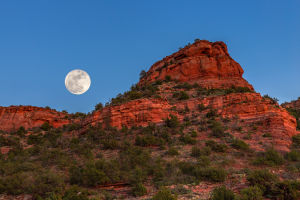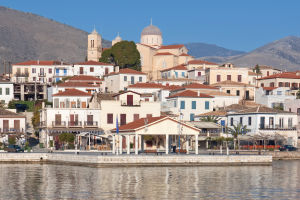The imposing Sajama Volcano, nestled in Bolivia’s Sajama National Park, stands tall as one of the country’s most breathtaking natural wonders.
Rising to a staggering height of over 6,500 meters (21,300 feet), it is Bolivia’s highest peak and a popular destination for hikers, nature enthusiasts, and adventure seekers.
Whether you're seeking a challenging trek or simply looking to take in the mesmerizing landscapes, Sajama offers an unparalleled experience.
Discovering Sajama National Park
Located in the remote Oruro Department, Sajama National Park is home to towering mountains, deep blue lagoons, thermal springs, and an abundance of wildlife. Sajama Volcano is the crown jewel of this landscape, offering a stunning backdrop for adventurers and photographers alike. The reflection of the snow-capped summit in the nearby lakes, as seen in the image, adds to the park’s otherworldly beauty.
While Sajama’s natural splendor is captivating, it is also rich in history. The region is home to pre-Columbian ruins, ancient Aymara burial towers known as chullpas, and centuries-old traditions that local communities still practice today.
How to Get There
Getting to Sajama National Park requires a bit of planning, but the journey is well worth it for the incredible sights that await.
By Car: If you're driving from La Paz, it’s about a 4–5-hour drive. Head south along Route 1 toward Patacamaya, then turn west onto Route 4 toward the Chilean border. The park's entrance is about 12 kilometers from the village of Sajama, which sits near the base of the volcano.
By Bus: Public buses regularly depart from La Paz to the town of Curahuara de Carangas, which is the nearest transport hub. From there, you can arrange a local taxi or shared ride to the park. Bus fares from La Paz to Curahuara are around 30-50 Bolivianos (approx. $4-7 USD).
Entry Fees and Park Information
Entry Fee: There is a small entrance fee of 30 Bolivianos (approx. $4 USD) per person to access the national park. This fee goes toward the preservation of the park’s natural beauty and supporting local conservation efforts.
Opening Hours: The park is open year-round, and you can visit at any time. However, the best time to visit Sajama is during the dry season, which runs from May to October. During these months, the weather is clearer, and the chances of rain are lower, offering the best conditions for hiking and exploration.
Hiking and Climbing Sajama
For experienced climbers, ascending Sajama Volcano is one of the most rewarding challenges in Bolivia. The trek is not for beginners, as it requires proper acclimatization and technical equipment due to the high altitude and icy conditions at the summit. The climb typically takes 5-7 days, and it is highly recommended to hire a licensed guide for safety and assistance with the challenging terrain. Costs for a guided climb range from $500 to $1,000 USD depending on the group size and services provided.
For those not looking to climb to the summit, the base of Sajama offers several day hikes that still provide incredible views of the surrounding landscape. The Laguna Sajama hike, for example, is a moderate trek that allows visitors to explore the area’s wildlife and take in panoramic views of the volcano without needing climbing gear.
What to Do Around Sajama Volcano
Thermal Springs: After a day of hiking or exploring, visitors can relax in the natural hot springs located near the village of Sajama. These thermal pools, surrounded by stunning views of the volcano, provide a perfect way to unwind. Entrance to the springs is usually around 10 Bolivianos (approx. $1.50 USD).
Wildlife Watching: Sajama National Park is home to several species of wildlife, including vicuñas, llamas, and Andean flamingos. Early mornings and late afternoons are the best times to observe these animals in their natural habitat.
Photography: The area surrounding Sajama is a dream for photographers. The reflection of the volcano on the calm surface of the Laguna Sajama creates stunning shots, especially during sunrise and sunset when the light casts a golden hue over the landscape.
Local Tips for Lykkers
Acclimatization: Sajama’s high altitude can cause altitude sickness for those not used to the elevation. It’s important to spend a few days in La Paz or Curahuara to acclimatize before heading to the park. Drink plenty of water, move slowly, and consider chewing coca leaves, a traditional remedy for altitude sickness.
What to Bring: Be sure to pack layers of warm clothing, as temperatures in Sajama National Park can drop significantly, especially at night. Additionally, bring plenty of water, sunscreen, and sunglasses to protect yourself from the intense sun at high elevations.
Respect Local Communities: The local Aymara people have lived in this region for centuries, and many still follow traditional customs. Always ask permission before taking photos of people or their homes and consider supporting the local economy by purchasing handmade crafts or hiring local guides.
Conclusion
Visiting Sajama Volcano in Sajama National Park is an extraordinary journey into the heart of Bolivia’s natural and cultural heritage. From challenging climbs to serene hikes and relaxing thermal springs, the park offers something for every type of traveler. Lykkers who venture into this remote part of Bolivia will be rewarded with stunning landscapes, unique wildlife, and an unforgettable experience of Bolivia’s highest peak.


